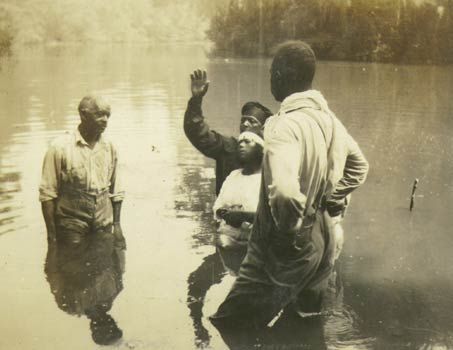As I went down to the river to pray
Studying about that good old way
And Who will wear the starry crown
Good Lord, show me the way.

I first heard this song as the last track on Gillian Welch’s iconic folk album “Revival.” It’s simplicity of line and lyric resonated with me. I could tell it was reaching deeply into the felt language of conversion, renewal, and the personal clinging to divine hope placed in a holy other. For all the world, I thought I had stumbled onto a track that few had heard and experienced. We roots music folks are susceptible to that given our tastes appeal to a narrow swath of a certain musical vein. (As I have shared before, Lisa does not travel that path; so I saw Kristofferson alone last week and will experience my beloved Lucinda the same way next.) But then came “O Brother Where Art Thou.” In the classic siren scene where Delmar became affiliated, there it was for all to hear. Only this time it was Allison Krauss doing the honors. The visceral experience of the song was no longer reserved for me and my ilk. Turns out it never was.

This song, hymn, spiritual, whatever you may call it, has lived for a long time. Different titles. Different words. Same soul. Claimed as Appalachian hymn and gospel song for white folks, it turns out the earliest version on record was found on page 104 of the 1867 collection “Slave Songs of the United States.” Originally sung as “Down in the valley to Pray”, it morphed over time to the river and was a staple for outdoor baptisms. As was often the case, it concealed a code for African American slaves seeking to escape. “Down to the river” was where they would try to get first, to throw off the scent for the howling hounds. “Starry Crown” spoke of navigating by way of the heavenly lights. “Good Lord, show me the way” was a prayer for guidance and deliverance along such routes as the Underground Railroad.” No wonder I felt soul-stirring sounds in my first listenings. I was hearing the echoes of generations of folks, black and white, who did more than sing and hear, they experienced it. Deep in the heart and soul.
In Luke’s gospel, Jesus began his earthly ministry by going down to the river to pray. His cousin John, the wilderness prophet was baptizing folks marking forgiveness of sin and a new way of life. Jesus, who had no sin to be forgiven, got in line with all those who did. As God with us, He came to identify with them, and in time allow that affection to be returned. Salvation we call it now. Conversion. Cleansing. Deliverance. Repentance. Dependance. Forgiveness. Belonging. Death, burial and resurrection. It’s all in there, part of the river passage, or at least should be. Yet experience has taught me when people go under for the Lord, one or two of those will stand out above the other. For me, baptism is best understood as an act of identifying with Jesus and his followers. Through him, we are connected to the God of the universe in a personal way. We are not in this alone. We classify ourselves as one who will walk the Jesus way in a world that generally does not. I ask folks to repeat the good confession that Jesus is Lord. Lord of creation. Lord of our life. Lord of this world as it is and as He wants it to be. And as people who go in dry and come out wet, we are different because of whatever inclined us to go there. Like the people at the Jordan that day, Jesus was in the water with us, and his father was well pleased.
At the end of last week’s service, we placed basins around the church. Folks placed their hands in the water and remembered their baptism. It was an invitation to recall the time and place, who was there and what it felt like. Most importantly, it was a call to consider what it meant then, and how much more it might mean now. And for those who had not personally gone down to the river, it was in an invitation to consider doing so now. An invitation to say for yourself that Jesus is Lord and, moreover, your Lord. That invitation still stands. Just like Delmar said. “Come on in boys. The water is fine.” It truly is. Always has been. And it will be too.
